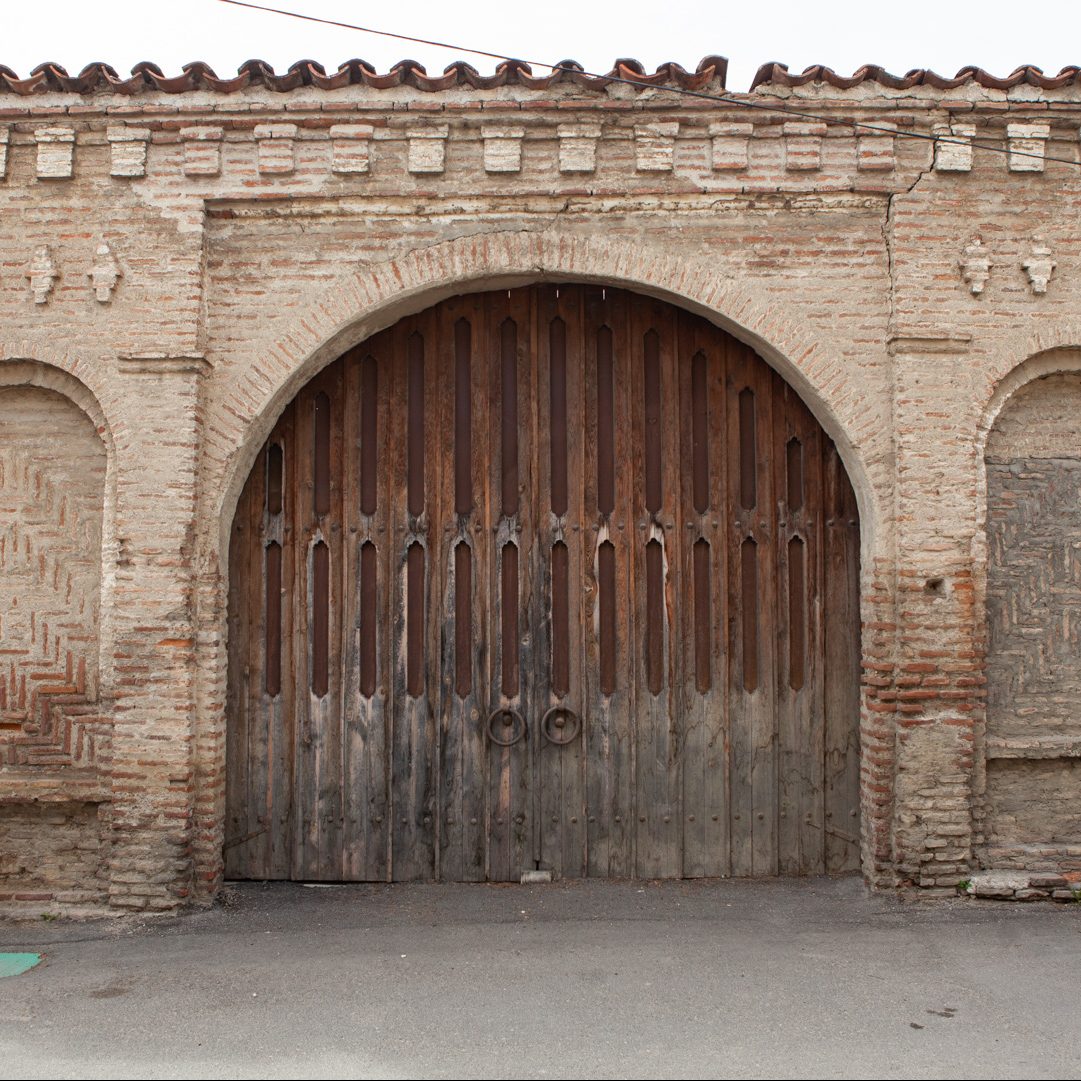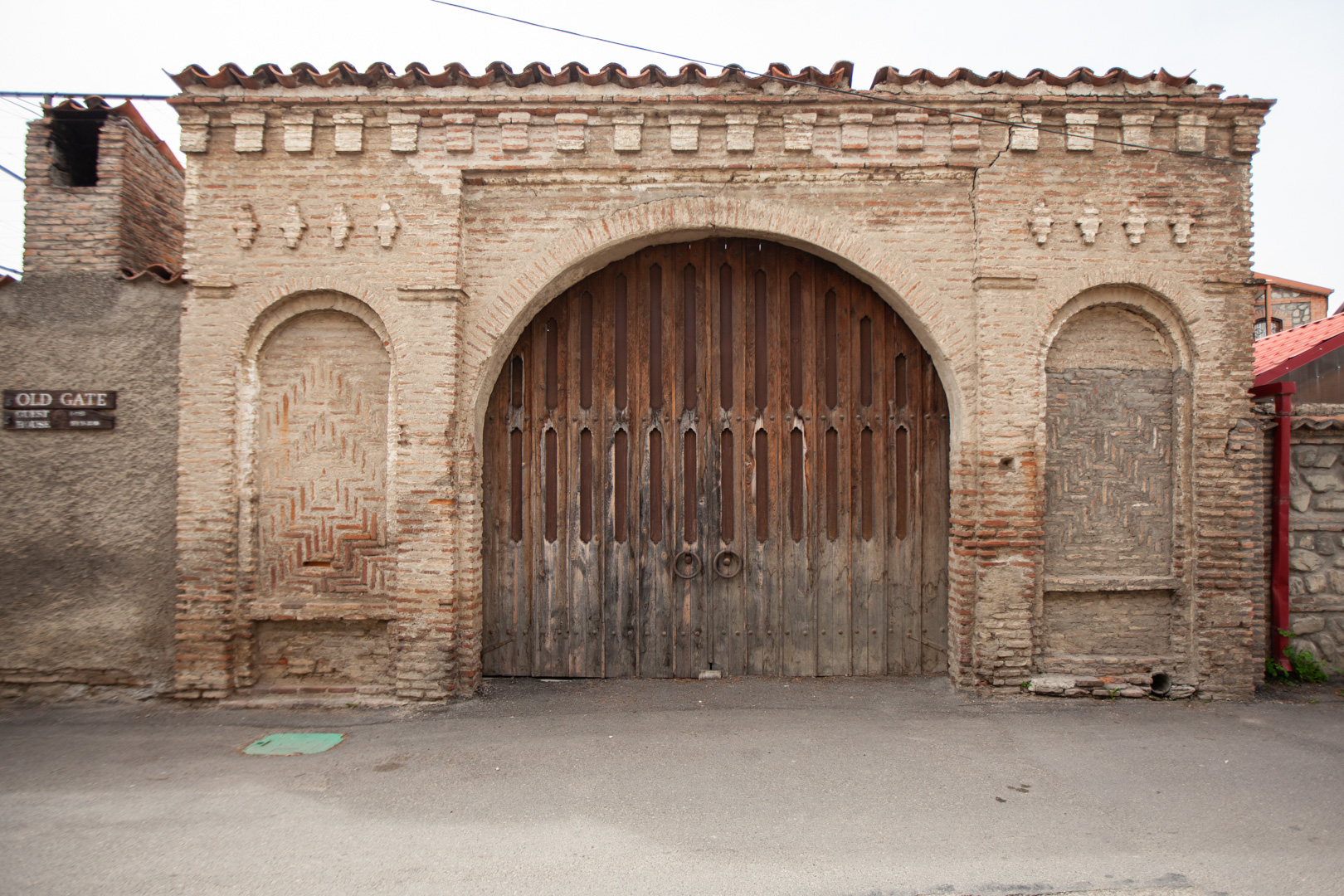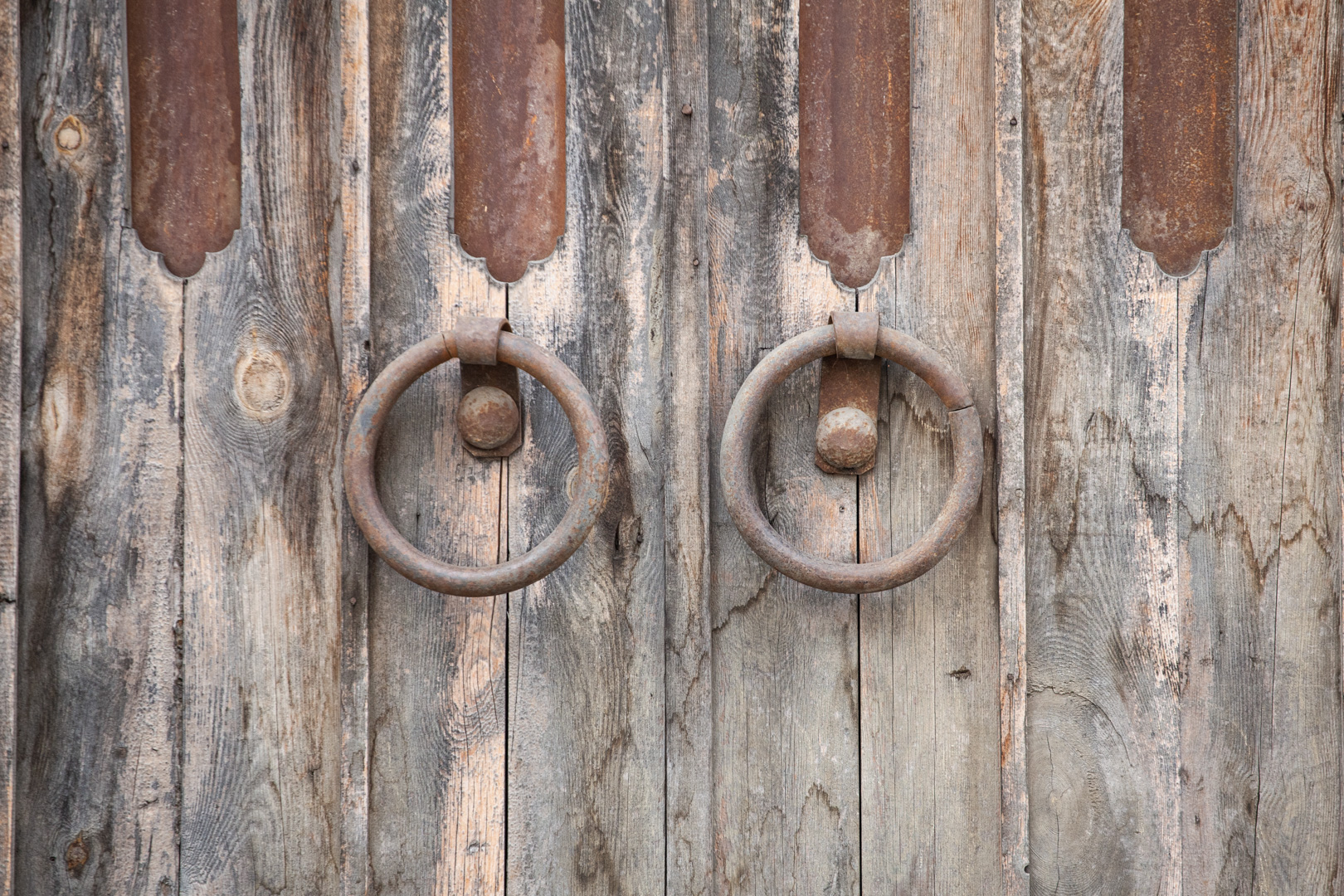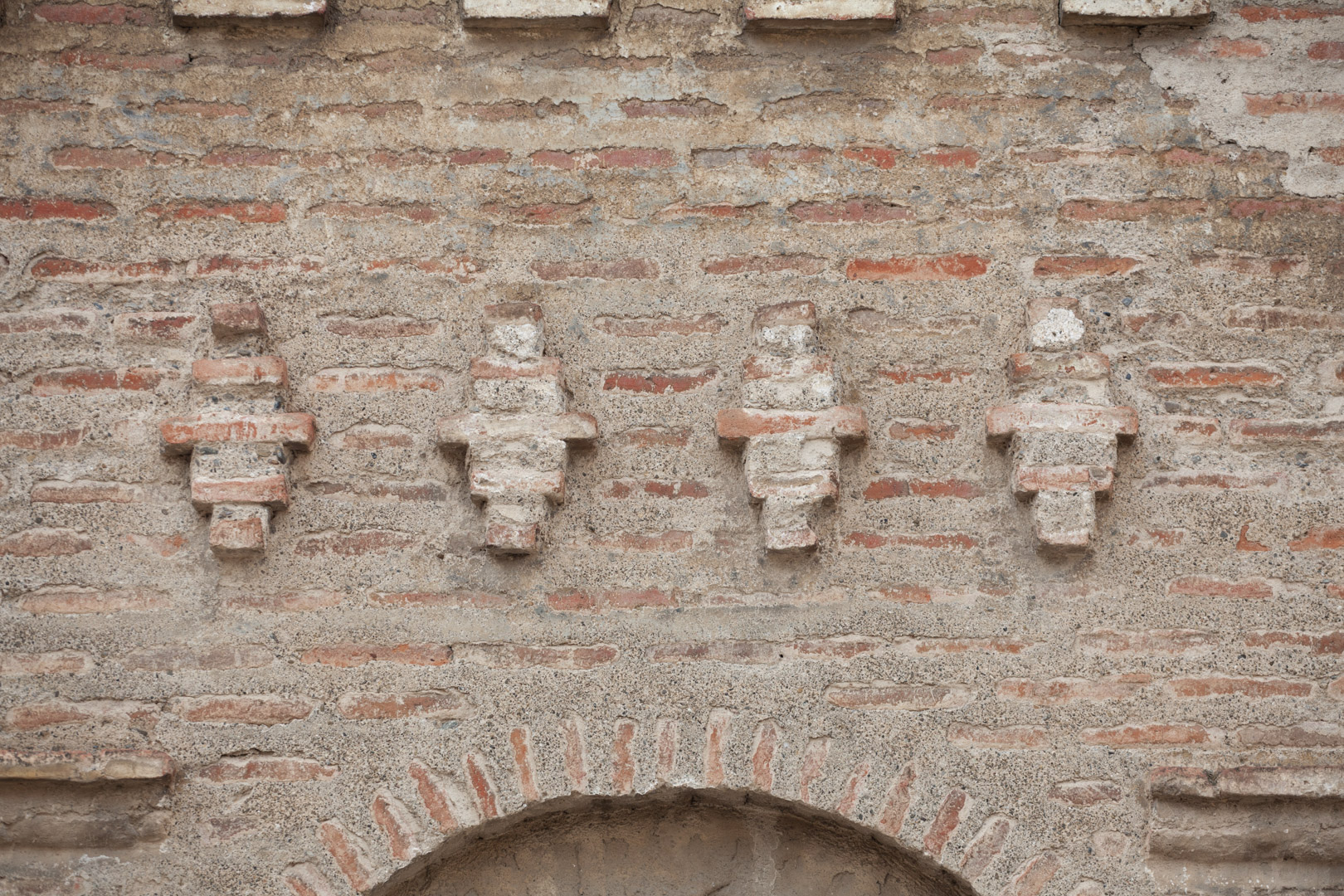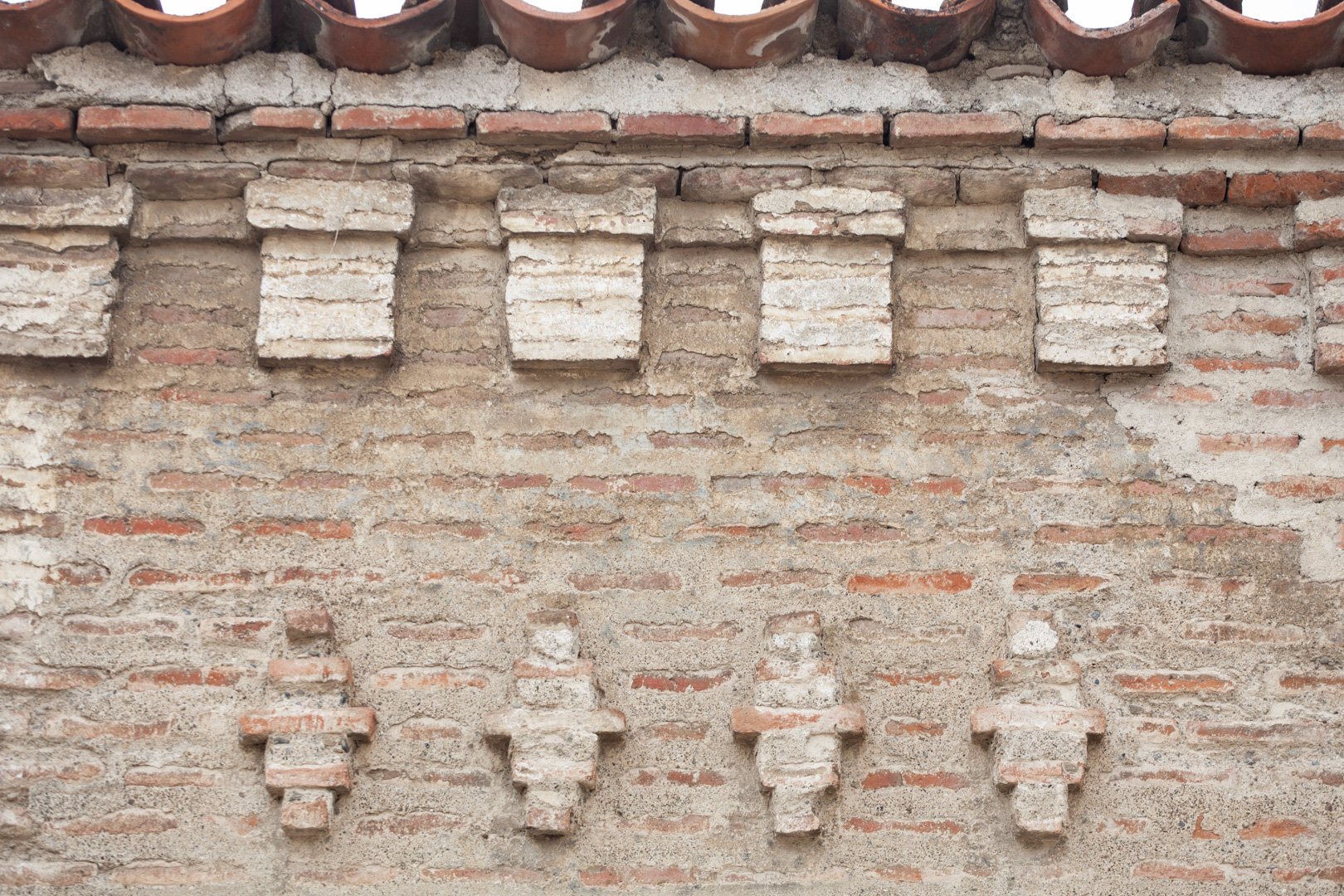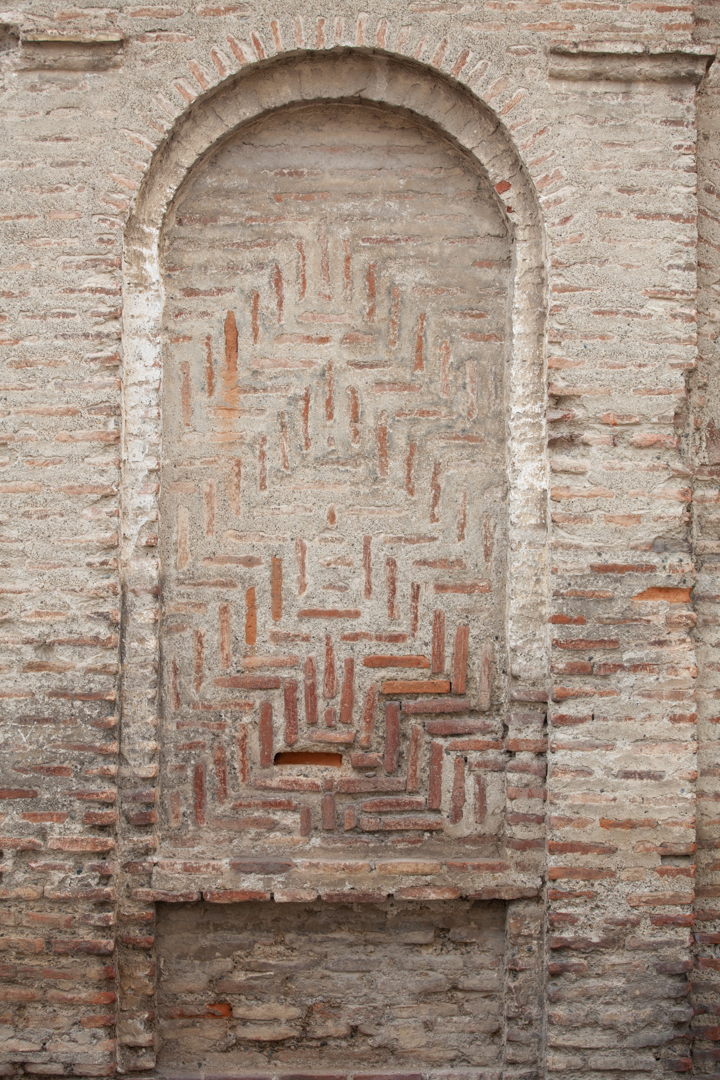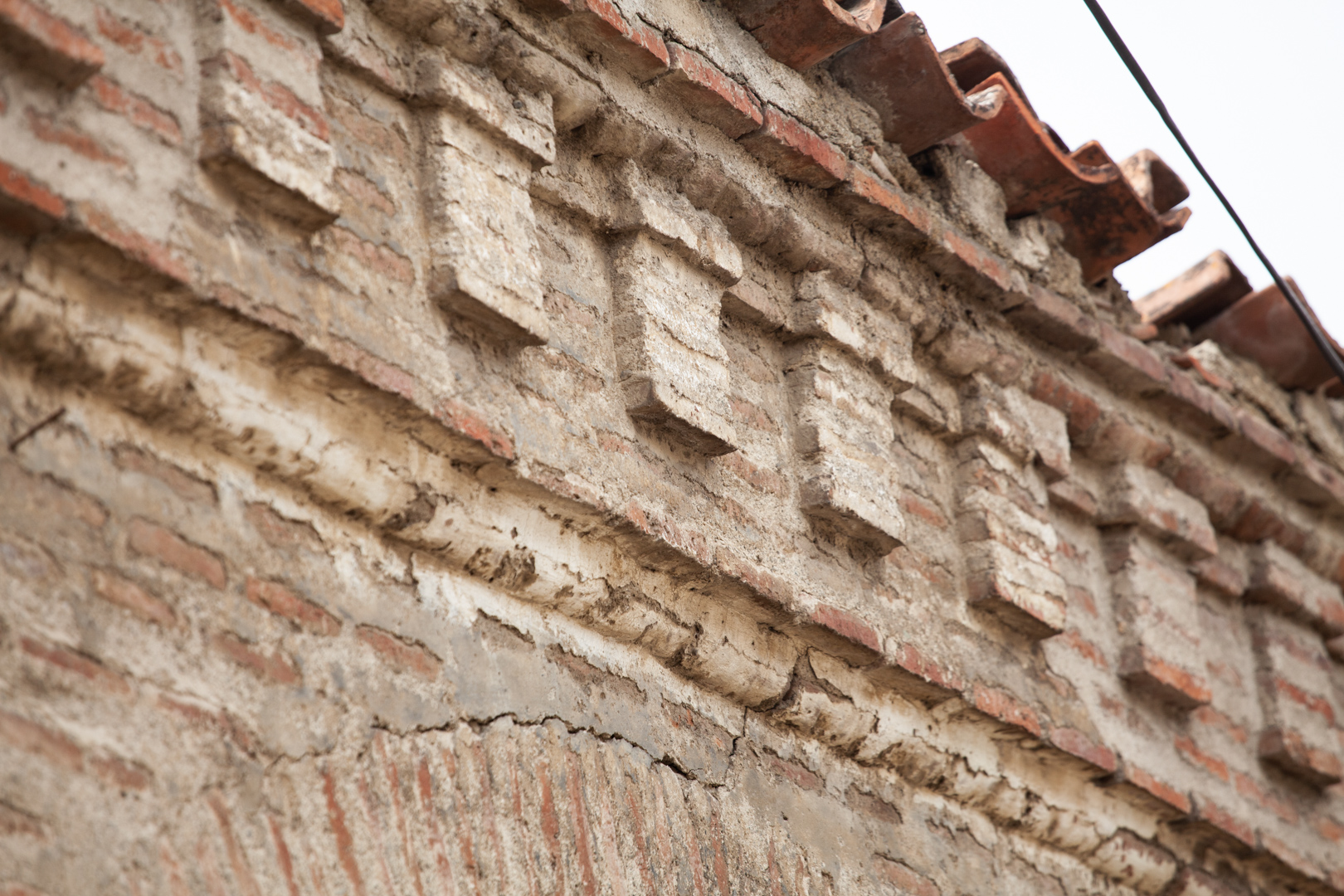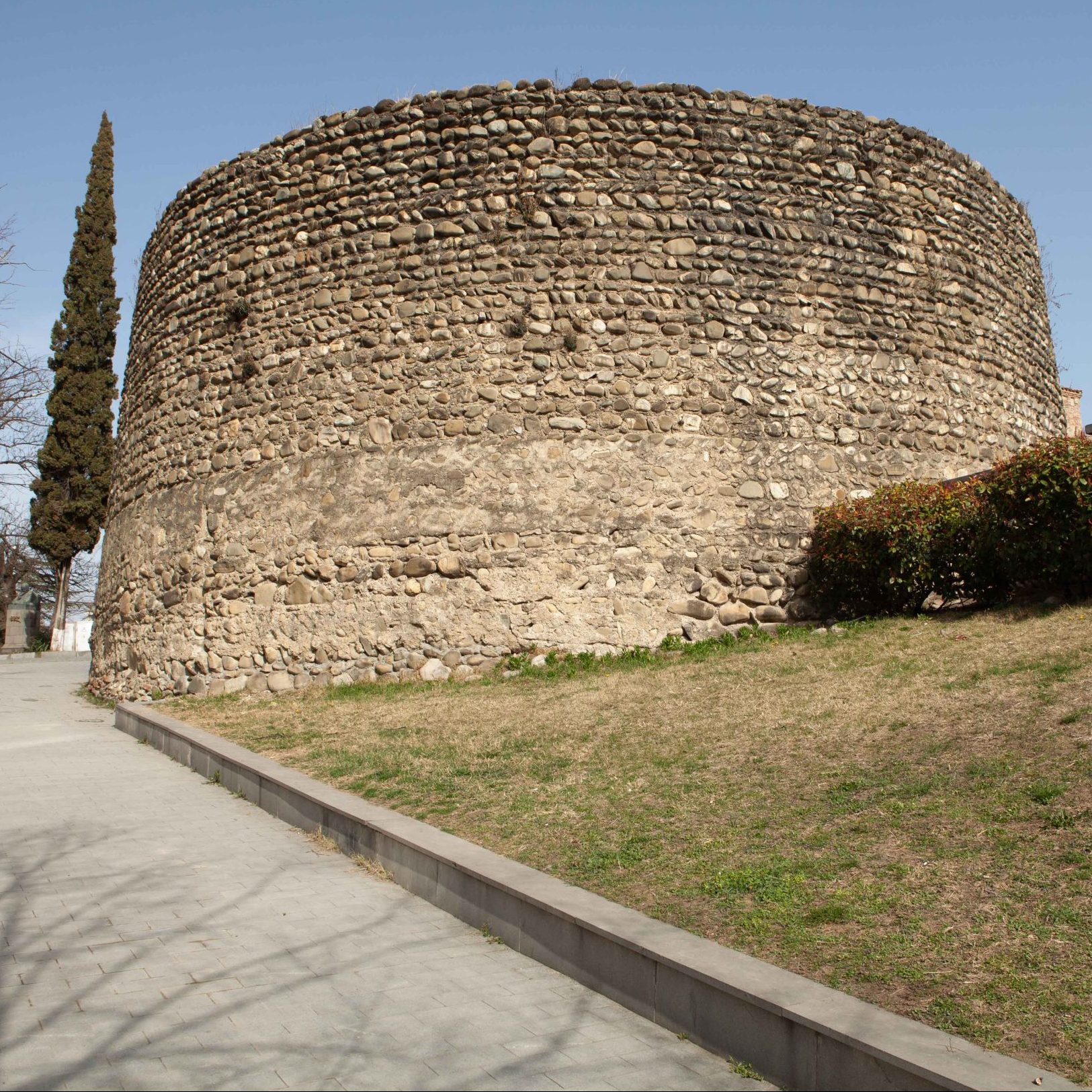მე-18 საუკუნის აგურის კარიბჭე თელავის ისტორიული განაშენიანების ერთ-ერთი უმნიშვნელოვანესი ძეგლია, რომელიც გვიანი შუა საუკუნეების დიდგვაროვანი თელაველის საცხოვრისის მასშტაბსა და ხასიათზე გვიქმნის წარმოდგენას. მოცემული საცხოვრებელი ანსამბლიდან თავდაპირველი სახით მხოლოდ იგია შემორჩენილი (მის უკან მდებარე შენობა სრულიად სახეცვლილია). კრამიტით გადახურული კარიბჭე სამფრთიანია, ცენტრში დიდი და გვერდებზე მცირე ნალისებრი თაღებით. ცენტრალურ თაღში ხის ალაყაფის კარია ჩასმული. აგურის კედლის მოწესრიგებული, რეგულარული წყობა გაფორმებულია პილასტრების მოტივით, ხოლო გვერდითი ნიშების თავზე აგურის წყობაშივე გამოყვანილი რომბისებრი ორნამნტია დატანილი. კარიბჭის ლავგარდანი შემკულია კვადრატებისაგან შემდგარი ფრიზული მოტივით. შენობა, როგორც უკვე ითქვა, მნიშვნელოვანია ტიპოლოგიითა და სიძველით, იგი ერთ-ერთი ადრეული ნაგებობაა ქალაქში. არქიტექტურულ-მხატვრული გადაწყვეტით მოცემული არქიტექტურული ფორმა ენათესავება მე-17-მე-18 საუკუნეების თელავურ წყაროებს.
The brick gate of the 18th century is one of the most important monuments of the historical development of Telavi, which gives us an idea of the scale and character of the late medieval noble residence in Telavi. From the given dwelling ensemble, only it has survived in its original form (the building behind it has been completely altered). The tiled gate has three wings, with large horseshoe shaped arches in the center and small ones on the sides. In the central arch there is a wooden main gate. An orderly, regular setting of brick walls is decorated with pilasters, and on top of the side niches there is a rhombic ornament put in a brick setting. The cornice of the gate is decorated with a frieze motif consisting of squares. The building, as already mentioned, is important in terms of typology and antiquity, and is one of the earliest buildings in the city. From the architectural-artistic point of view, the given architectural form is related to the Telavi sources of the 17th-18th centuries.

